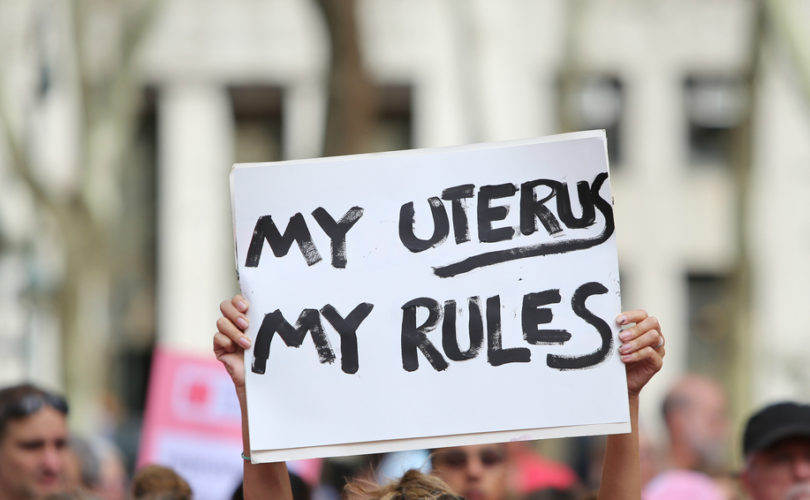In the first 2 minutes of TED Talk “The Antidote to Apathy,” Dave Meslin masterfully points out that we often mistakenly conclude that those who don’t respond to our messages are apathetic. In reality, what appears as a problem of indifference can actually be a problem of packaging. In other words, as Meslin says, “People do care, but… we live in a world that actively discourages engagement by constantly putting obstacles and barriers in our way.”
How often have pro-lifers lamented, “The media ignores us,” or “People just don’t care”? And yet, perhaps this is because our packaging doesn’t connect with the deep passions and strong opinions people have. Perhaps people aren’t apathetic; perhaps we have unintentionally excluded them by communicating our message in a way that resonates with us, but not with the culture.
For example, consider the bumper sticker, “Choose Life!” If you saw that on a vehicle, would you conclude the driver was pro-life? If so, congratulations—you’re part of the pro-life bubble! But let’s consider, for a moment, the average person who doesn’t associate with ardent activists in either the anti- or pro-abortion camps. They may see that bumper sticker and think, “Choose life—stop human trafficking” or “Choose life—end poverty.” If our message is too vague, it will be received through the lens of whatever is going on in the viewer’s world.
So, specificity is key. And what, precisely, are we saying? We are saying that dismembering the tiny bodies of the youngest, most vulnerable humans amongst us is a human rights violation. That is hardly extreme; in fact, opposing that reasonable view, when phrased that way, is real extremism.
So how do we get this pro-life message out to the culture in a way which resonates with the public and transforms their view of embracing abortion as a woman’s right to rejecting it as a moral wrong?
We start by surveying what we know about our culture in general:
People love children—just look at how people enthusiastically post their pregnancy and baby photos on Facebook, how strangers stop to make funny faces at babies or reach out and touch the belly of a pregnant woman, or at societal outrage over the killing of children in the Sandy Hook Elementary School shooting.
People are believers in human rights and deplore human rights violations—just ask (something my organization does daily) the average person if they believe in human rights and they’ll say yes. Or just look at peoples’ horror towards genocide and massacres of all kinds in foreign countries.
People are changed by what they see—just look at the 16-fold increase in blood donations the day after 9-11 when people saw horrifying images replayed on TV, or Montana’s shift from 5th to 39th across the US for crystal meth abuse—in less than a decade—after a disturbing, state-wide visual campaign, or William Wilberforce’s successful abolition of the slave trade (and ultimately slavery) in the wake of abolitionists, like Thomas Clarkson, conveying the gut-wrenching, brutal facts of that human rights violation.
Click “like” if you are PRO-LIFE!
Bearing this in mind, the pro-life movement can successfully change public opinion by doing at least these three things:
1. Humanize the pre-born child.
2. Prove that abortion is a human rights violation.
3. Package the message visually in order to reach our visual culture.
At CCBR we have been doing this for over a decade and have seen, time and time again, peoples’ minds changed on abortion. In fact, we have boxes of surveys from high school students, and others, who heard our presentations; attendees are asked to rate their opinion on abortion before and after the presentation on a scale from 0 to 10, where 0 means support all abortion and 10 means against all abortion.
Of the hard-to-reach crowd—those who had a staunch pro-abortion stance (0 to 3)—an astonishing 42% shifted their view towards the pro-life position. Even more amazing is that of the respondents who were in the easier-to-reach, “mushy middle” crowd (4-7), 77% of them shifted their views more towards the pro-life view. Many of the students we spoke to already were in the pro-life range (8-10); even so, 53% of these respondents said that they became even more strongly pro-life and of the remaining 47%, 78% of respondents were already fully pro-life.
This 3-prong strategy goes beyond assembly presentations; we use it in a diversity of projects, and continually get feedback of opinions changing. Consider this woman who encountered one of our Youtube videos: “A big thank you goes out to whoever posted this video. I scheduled an appointment with Planned Parenthood to have this procedure and wanted to learn more because they wouldn’t give me any information. I’m calling to cancel right now. I don’t want my baby ripped to shreds.”
If we’re going to change the culture we need to engage the culture, and when we do the latter, it’s imperative we make sure our message is grounded in reason and communicated through a winning strategy. When we do this, we’ll encounter more young people like the teen who saw one of our projects outside her high school and decided to cancel her abortion.
Reprinted with permission from Unmasking Choice

